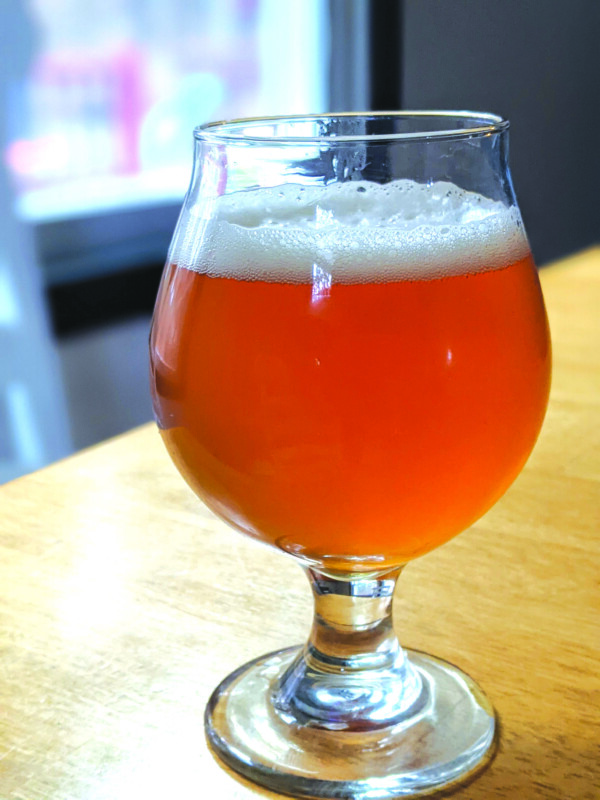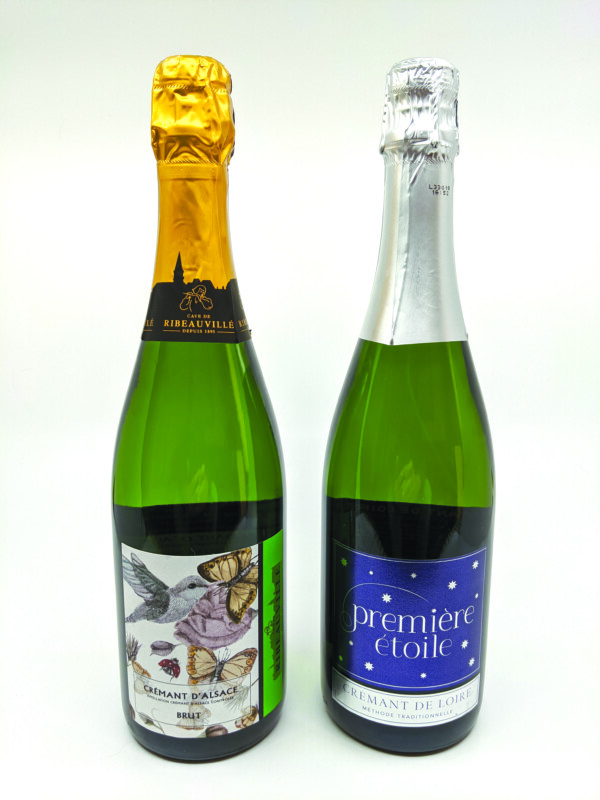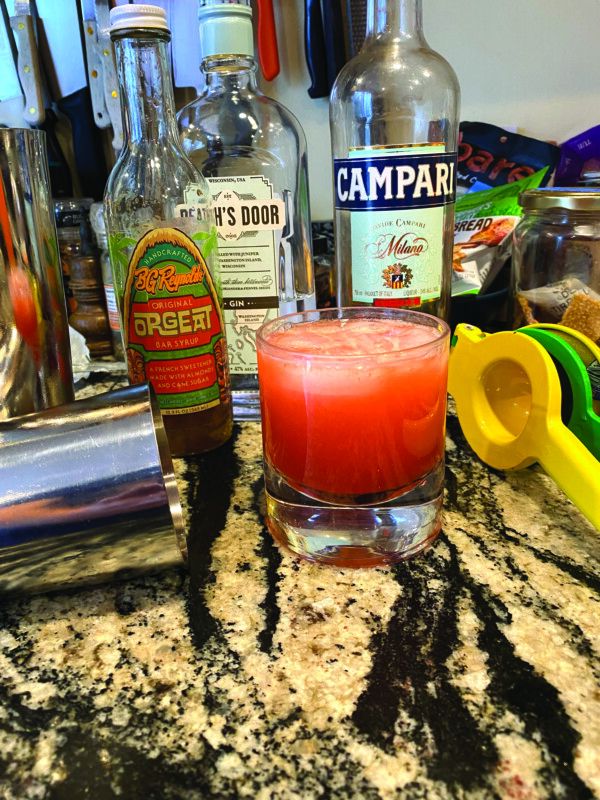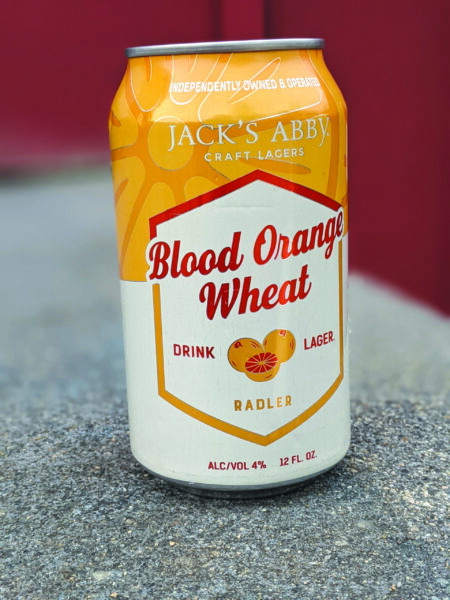Brunches, special menus and more for Mother’s Day
Mother’s Day is fast approaching — check out this list of brunches, dinners and special menus at local restaurants and function centers. Most dine-in events are planned for Mother’s Day (Sunday, May 9) unless otherwise specified, while a few local businesses are planning takeout specials. Do you know of an eatery offering Mother’s Day specials that’s not on this list? Let us know at [email protected].
• 110 Grill (875 Elm St., Manchester, 836-1150; 27 Trafalgar Square, 943-7443; 136 Marketplace Blvd., Rochester, 948-1270; 2 Portwalk Place, Portsmouth, 373-8312; 19 Portsmouth Ave., Stratham, 777-5110; 250 N. Plainfield Road, W. Lebanon, 790-8228; 110grill.com) is taking reservations for a Mother’s Day brunch at all of its locations, including those in New Hampshire. In addition to its full menu, several specials will be available from 10 a.m. to 3 p.m., like breakfast tacos, chicken and waffles, steak and egg Benedict, apple cider doughnut French toast, and brunch cocktails like bloody marys, double espresso martinis and adult mocha iced coffees.
• 603 Charcuterie (Derry, 603charcuterie.com) is taking orders for several Mother’s Day charcuterie board specials, including those with specialty meats and cheeses, but also some dessert options like macarons, chocolate-covered strawberries and more. Pickups will be at Creative Chef Kitchens (35 Manchester Road, Derry) on Friday, May 7, from 3 to 6 p.m.; Saturday, May 8, from 8 a.m. to 5 p.m.; and Sunday, May 9, from 8 a.m. to 12:30 p.m., depending on which charcuterie option you choose.
• Alan’s of Boscawen (133 N. Main St., Boscawen, 753-6631, alansofboscawen.com) will serve a Mother’s Day brunch buffet from 9 a.m. to 3 p.m., featuring items like fresh fruit, assorted cheeses and crackers, pastries, scrambled eggs, homefries, bacon and sausage; plus lunch options like roast turkey with stuffing, crabmeat stuffed haddock, and a carving station with roast leg of lamb, prime rib and Virginia baked ham. Call for reservations.
• Atkinson Resort & Country Club (85 Country Club Drive, Atkinson, 362-8700, atkinsonresort.com) will serve a Mother’s Day brunch buffet from 10 a.m. to 2 p.m., featuring a waffle station and made-to-order omelet station; a carving station with items like prime rib, ham and apple-cured turkey; breakfast items, like pastries, bacon, sausage and homefries; lunch entrees, like sweet and spicy chicken, baked haddock, and smoked Gouda and white cheddar macaroni and cheese; and desserts, like chocolate mousse, tiramisu, cheesecake lollipops and assorted cookies and brownies. Reservations are required.
• Averill House Vineyard (21 Averill Road, Brookline, 244-3165, averillhousevineyard.com) will serve a high tea Mother’s Day brunch from 10 a.m. to noon, featuring a pre-set four-course brunch, a cup of tea, a tasting flight of four wines per guest (must be 21+) and a souvenir glass.
• The Bakeshop on Kelley Street (171 Kelley St., Manchester, 624-3500, thebakeshoponkelleystreet.com) will be open on Mother’s Day from 9 a.m. to 1 p.m. Place any pickup orders by May 6.
• Bedford Village Inn (2 Olde Bedford Way, Bedford, 472-2001, bedfordvillageinn.com) will serve a Mother’s Day brunch in its Great Hall featuring a grand buffet from 9:30 a.m. to 2:15 p.m., followed by a special three-course prix fixe dinner menu served in its dining room from 2 to 7 p.m. The brunch buffet will have chef-attended Belgian waffle and omelet stations, plus a charcuterie and cheese display, hand-carved meats to order like North Country Smokehouse ham and herb-crusted slow-roasted beef, and assorted soups, salads and breakfast options. The three-course dinner will include your choice of an appetizer (roasted poblano pepper and corn chowder, potato and leek bisque, Dowie Farm pea shoots or panzanella); an entree (grilled tournedos of beef, Scottish salmon filet, milk-fed veal loin medallions, smoked Kurobuta pork loin, garlic and herb tri-colored quinoa with vegetables, or grilled swordfish loin); and a dessert (carrot cake, chocolate beet cake, vanilla bean creme brulee, or passionfruit cream pavlova). Reservations are required for both.
• Birch Wood Vineyards (199 Rockingham Road, Derry, 965-4359, birchwoodvineyards.com) will serve a Mother’s Day brunch with two available seatings, at 10:30 a.m. and 12:30 p.m. Several plated meals are available to choose from, including a biscuit and gravy plate, a French toast plate, a broccoli and cheddar frittata plate, a chicken picatta plate, a haddock plate, a short rib plate and an eggplant Napoleon plate. All breakfast entrees are served with fruit salad and lunch entrees with mixed green salad and raspberry vinaigrette — all plates also come with a variety of fresh baked breads, either milk, juice or coffee, and a trio of desserts. Reservations are required.
• Buckley’s Great Steaks (438 Daniel Webster Hwy., Merrimack, 424-0995, buckleysgreatsteaks.com) is taking reservations for Mother’s Day, from 1 to 6 p.m., serving its regular menu with specials. Call during business hours or make your reservation online.
• Clam Haven (94 Rockingham Road, Derry, 434-4679, clamhaven.com) has customizable options from its new catering menu, featuring items like shrimp or lobster tail cocktail, platters of seafood sliders, chicken fingers, hot dogs, burgers and fish tacos, and party-sized options of steam lobster or classic New England clambakes with several sides.
• The Coach Stop Restaurant & Tavern (176 Mammoth Road, Londonderry, 437-2022, coachstopnh.com) will serve a special Mother’s Day menu, with dine-in reservations accepted for 11:30 a.m., 2:30 p.m. or 5:30 p.m., as well as pre-order takeout and free delivery. Selections include appetizers like crab cakes, spinach and artichoke dip, bacon-wrapped scallops and French onion soup, and entrees like baked haddock, roasted prime rib of beef, chicken Marsala, chicken and broccoli alfredo and seafood linguine alfredo.
• Colby Hill Inn (33 The Oaks, Henniker, 428-3281, colbyhillinn.com) will serve a special three-course prix fixe menu for Mother’s Day, with seatings at noon, 1 p.m., 2:30 p.m. and 4 p.m. Choose your own first course (English pea, spring leek and ham soup, creamy scallop and tomato bisque, market greens salad, organic spinach salad or spring tempura); main entree (Cornish hen au vin, San Francisco cioppino, house-made saffron tagliatelle pasta, petite leg of lamb, bison short rib Wellington, wiener schnitzel or pan-roasted monkfish and lobster); and a dessert (coconut lime tart, mimosa brulee, chocolate cake with mocha buttercream, profiterole trio or mignardises). Other a la carte extras include oysters on the half-shell, smoked salmon pierogi and farmer’s cheese and charcuterie boards.
• The Common Man (25 Water St., Concord, 228-3463; 304 Daniel Webster Hwy., Merrimack, 429-3463; 88 Range Road, Windham, 898-0088; 10 Pollard Road, Lincoln, 745-3463; 21 Water St., Claremont, 542-6171; Foster’s Boiler Room, 231 Main St., Plymouth, 536-2764; 60 Main St., Ashland, 968-7030; Lago, 1 Route 25, Meredith, 279-2253; Italian Farmhouse, 337 Daniel Webster Hwy., Plymouth, 536-4536; Lakehouse Grille, 281 Daniel Webster Hwy., Meredith, 279-5221; Camp, 300 Daniel Webster Hwy., Meredith, 279-3003; Airport Diner, 2280 Brown Ave., Manchester, 623-5040; Tilt’n Diner, 61 Laconia Road, Tilton, 286-2204; Route 104 Diner, 752 Route 104, New Hampton, 744-0120; thecman.com) will be serving its dinner menus, with Mother’s Day specials. Hours vary depending on the location, and reservations are recommended. Each location is also offering a Mother’s Day meal for four to go, which includes an appetizer of spinach artichoke dip and crackers, braised beef short ribs with mashed potatoes and pesto green beans, house-baked rolls and blueberry breakfast bread, and strawberry shortcake. An optional a la carte side offering of the Common Man’s signature macaroni and cheese is also available. Order by May 3. Pickups will be on Saturday, May 8.
• Copper Door Restaurant (15 Leavy Drive, Bedford, 488-2677; 41 S. Broadway, Salem, 458-2033; copperdoor.com) will serve a special prix fixe menu for Mother’s Day, beginning at 4 p.m., with two-course, three-course and four-course menu options. Items to choose from include sirloin spring rolls, roasted poblano and corn chowder, slow-roasted prime rib, twin filet mignon, shrimp gnocchi, ginger haddock, limoncello cupcakes and strawberry cheesecake. Call to make a reservation.
• Cotton (75 Arms St., Manchester, 622-5488, cottonfood.com) will be open from noon to 5 p.m. on Mother’s Day. Reservations are accepted online through OpenTable.
• CR’s The Restaurant (287 Exeter Road, Hampton, 929-7972, crstherestaurant.com) will be open from noon to 5 p.m. on Mother’s Day, serving specials along with some of its popular dinner entrees. Call to make a reservation.
• The Crown Tavern (99 Hanover St., Manchester, 218-3132, thecrownonhanover.com) is accepting Mother’s Day reservations for both indoor and outdoor dining, from noon to 3:30 p.m.
• The Crust & Crumb Baking Co. (126 N. Main St., Concord, 219-0763, thecrustandcrumb.com) will be open on Mother’s Day from 10 a.m. to 2 p.m. Place any pickup orders as soon as possible.
• Dahlia Restaurant (dahlianomadic.com) has a limited number of tickets left for a Mother’s Day brunch from noon to 3 p.m., in collaboration with Enna Chocolate (152 Front St., Exeter). Reservations are required and can be made online.
• The Derryfield Restaurant (625 Mammoth Road, Manchester, 623-2880, thederryfield.com) will serve a Mother’s Day brunch buffet, with seatings every half hour from 9:30 a.m. to 3 p.m. There will be an omelet station, a carving station with slow-roasted prime rib and oven-baked ham, assorted salads, baked goods and pastries, and a dessert station with a variety of mini pastries. The main buffet line will have breakfast options like bacon, sausage, corned beef hash, French toast, scrambled eggs and home fries. Call to make a reservation.
• Fratello’s Italian Grille (155 Dow St., Manchester, 624-2022, fratellos.com) will serve a variety of Mother’s Day specials at its Manchester location, like baked stuffed haddock, seafood fra diavolo, roasted vegetable salmon, chicken capri, chicken Parmesan, pan-seared duck breast, beef tenderloin, baked stuffed shells and more. Call to make a reservation.
• Georgia’s Northside (394 N. State St., Concord, 715-9189, georgiasnorthside.com) is taking orders for a surf and turf special for Mother’s Day, featuring chargrilled 8-ounce New York strip steak, a lobster roll, creamy macaroni and cheese and Brussels sprouts. Order online for pickup on Sunday, May 9, from 11 a.m. to 7 p.m.
• Giorgio’s Ristorante & Bar (270 Granite St., Manchester, 232-3323; 524 Nashua St., Milford, 673-3939; 707 Milford Road, Merrimack; giorgios.com) will be serving brunch specials on Mother’s Day from 11 a.m. to 2 p.m., in addition to its regular menus, at its Manchester and Milford locations.
• Greenleaf (54 Nashua St., Milford, 213-5447, greenleafmilford.com) is serving a special Mother’s Day brunch menu that will be available for both dine-in and takeout. Brunch plates will include eggs with bacon or sausage, home fries and English muffin toast; Culture’s honey wheat French toast with local maple syrup and whipped molasses honey butter; and buttermilk waffles with rhubarb compote, chantilly cream and local maple syrup. There will also be assorted appetizers, like local cheese boards, smoked pea and mint soup, and house made burrata. Dine-ins will be from 10 a.m. to 2 p.m., with reservations accepted online through OpenTable. If ordering takeout, orders must be placed by May 6.
• Hart’s Turkey Farm Restaurant (233 Daniel Webster Hwy., Meredith, 279-6212, hartsturkeyfarm.com) is taking orders for family-sized meals for Mother’s Day, with options like whole roasted turkey, slow roasted prime rib or baked ham. Each comes with whipped potatoes, butternut squash, green beans and dinner rolls. Dessert choices also include apple pie, blueberry pie and chocolate cream pie.
• The Homestead Restaurant & Tavern (641 Daniel Webster Hwy., Merrimack, 429-2022, homesteadnh.com) will serve a variety of specials for Mother’s Day, with seatings from noon to 6 p.m. Items will include roast prime rib of beef, broiled haddock, grilled swordfish, chicken cordon bleu, New York sirloin, chicken marsala and more. Call to make a reservation.
• LaBelle Winery (345 Route 101, Amherst, 672-9898; 14 Route 111, Derry; labellewinerynh.com) will serve a special Mother’s Day brunch buffet at both locations, with reservations accepted through OpenTable. Options will include assorted pastries and fruit displays, chef-attended omelet stations and build-your-own berry shortcake stations, breakfast items like baked stuffed banana brioche French toast, applewood smoked bacon and pork sausage, and lunch items like herb-roasted filet of cod, garlic and rosemary chicken breast and orzo salad with red wine balsamic vinaigrette. LaBelle Winery’s Amherst location is also taking orders for heat-and-serve take-home meal packages, with options like whole wheat rolls with red wine honey butter, petite greens salad, brown sugar glazed ham with golden raisin chutney, roasted potatoes and lemon asparagus, and strawberry shortcake with chantilly cream for dessert.
• Mile Away Restaurant (52 Federal Hill Road, Milford, 673-3904, mileawayrestaurantnh.com) will serve special dinners for Mother’s Day that include your choice of an appetizer, salad, entree or dessert, available for dine-in or takeout. Appetizers include ham minestrone, Swedish meatballs and fresh fruit plates with sorbet, with the option to substitute those for shrimp cocktail, escargots or onion soup. Salads include Caesar or garden options, with blue cheese, house ranch, raspberry vinaigrette or balsamic dressing. Available entrees include sliced roast sirloin, pork Madagascar, chicken Florentine, piccata Milanese, baked stuffed jumbo shrimp, maple salmon, baked scrod, vegetarian baked eggplant Parmesan and wienerschnitzel. All entrees come with your choice of a baked potato, Swiss potato or rice pilaf, and your choice of green bean Provencal, maple-glazed carrots, pickled beets or applesauce. Available desserts include Snickers pie, tiramisu cake, sorbet, bread pudding, cheesecake, chocolate ganache cake, lemon mascarpone cake and chocolate mousse cake.
• MT’s Local Kitchen & Wine Bar (212 Main St., Nashua, 595-9334, mtslocal.com) is taking reservations for Mother’s Day, from 1 to 6 p.m., serving its regular menu with specials. Call during business hours or make your reservation online. Outdoor dining will be available on a first-come, first-served basis.
• New England’s Tap House Grille (1292 Hooksett Road, Hooksett, 782-5137, taphousenh.com) will serve a special Mother’s Day brunch, from 9 a.m. to 1 p.m.
• The Old Salt Restaurant at Lamie’s Inn (490 Lafayette Road, No. 9, Hampton, 926-8322, oldsaltnh.com) will be open from 11 a.m. to 6 p.m. on Mother’s Day, serving specialty items like roast prime rib dinners, artichoke and mascarpone agnolotti, baked stuffed haddock, boiled lobster dinners, and grilled salmon with lemon dill butter sauce, plus desserts like raspberry white chocolate cheesecake, Boston cream pie, carrot cake and strawberry shortcake.
• Presto Craft Kitchen (168 Amory St., Manchester, 606-1252, prestocraftkitchen.com) is taking orders for a variety of specialty sweets for Mother’s Day, including jumbo chocolate-covered strawberries, hand-filled cannolis (a dozen per order), cheesecake-filled chocolate hearts, and Oreo cheesecake cake-sicles (a half dozen per order). Order by May 2. Pickups will be on Friday, May 7, and Saturday, May 8.
• The Red Blazer Restaurant & Pub (72 Manchester St., Concord, 224-4101, theredblazer.com) will be open its normal Sunday hours on Mother’s Day, from 11 a.m. to 8 p.m., serving its regular menu with a few specials like prime rib. Seating will be on a first-come, first-served basis and takeout will be available via online ordering only (no phone orders).
• The Republic of Campo (969 Elm St., Manchester, 666-3723, republiccafe.com; campoenoteca.com) is accepting Mother’s Day reservations beginning at 4 p.m., with full menus available from both restaurants in addition to locally sourced specials.
• Roundabout Diner & Lounge (580 U.S. Highway 1 Bypass, Portsmouth, 431-1440, roundaboutdiner.com) will serve an all-you-can-eat Mother’s Day brunch buffet, accepting reservations from 9 a.m. to 2 p.m. Featured items are built-your-own omelettes, Belgian waffles, bacon, sausage, cinnamon bun French toast, a seasoned prime rib carving station, baked haddock and more. Other house Mother’s Day specials available on the menu will include brie grilled cheese, pork belly Benedict, Italian sausage scramble and chocolate-covered cherry pancakes.
• SALT Kitchen & Bar (Wentworth by the Sea, 588 Wentworth Road, New Castle, 373-6566, saltkitchenandbar.com) will serve a special multi-course menu for Mother’s Day, featuring your choice of a first course (scallop escabeche, lobster bisque or spring lettuce); an entree (sous vide Atlantic salmon, sliced New York strip, chicken Marsala or English pea ravioli); and a dessert (chocolate tiramisu, lemon meringue cheesecake or strawberry rhubarb crostata. Call to make a reservation.
• Simply Delicious Baking Co. (176 Route 101, Bedford, 488-1988, simplydeliciousbakingco.com) is taking orders for hand-dipped chocolate-covered organic strawberries for Mother’s Day. Order by May 5. Pickups will be on Saturday, May 8, from 8 a.m. to noon.
• Surf Restaurant (207 Main St., Nashua, 595-9293; 99 Bow St., Suite 200W, Portsmouth, 334-9855; surfseafood.com) is taking reservations for Mother’s Day from 1 to 6 p.m., serving its regular menu with specials. Call during business hours or make your reservation online. The bar and outdoor dining will be available on a first-come, first-served basis.
• The Village Trestle (25 Main St., Goffstown, 497-8230, villagetrestle.com) will be open from 11:30 a.m. to 9 p.m. on Mother’s Day, serving its full menu along with a special featuring a lobster roll, fries and coleslaw. Live acoustic music with Bob Pratte and Lisa Marie will be from 3:30 to 6:30 p.m.
• Wolfe’s Tavern (Wolfeboro Inn, 90 N. Main St., Wolfeboro, 569-3016, wolfestavern.com) will serve a special Mother’s Day menu from 10 a.m. to 3 p.m., featuring items like croissant French toast, pan-bronzed chicken breast, grilled herb-marinated pork tenderloin, and caramelized onion and goat cheese deep dish quiche. Call or book your reservation online.
• Woodstock Inn Brewery (135 N. Main St., North Woodstock, 745-3951, woodstockinnbrewery.com) is offering a “Mother of all Brunches” package for Mother’s Day, including a weekend room special and a buffet from 9 a.m. to 2 p.m. that will feature an omelet bar, a waffle bar, a carving station with ham and prime rib, and other items like eggs Benedict, salmon, vegetable lasagna and assorted desserts. Brunch reservations are accepted but not required.
• XO on Elm (827 Elm St., Manchester, 560-7998, xoonelm.com) will be open from 2 to 7 p.m. on Mother’s Day. Call or make your reservation online through OpenTable.
• Zachary’s Chop House (4 Cobbetts Pond Road, Windham, 890-5555, zacharyschophouse.com) will serve a Mother’s Day breakfast buffet from 8 to 11 a.m., followed by other Mother’s Day specials beginning 11 a.m. Call to make a reservation.
• Zorvino Vineyards (226 Main St., Sandown, 887-8463, zorvino.com) will serve a Mother’s Day brunch buffet with seatings at 10 a.m., noon and 2 p.m. There will be assorted breakfast items, soups, salads, carving stations, desserts and more. Call or book your reservation online.
This story was possible with the generous financial support of Hippo readers. Hippo is very grateful to have the support of its readers. If you haven’t contributed yet, please consider a small contribution. Your contributions allow Hippo to write more stories and gets you access to additional stories and columns.






